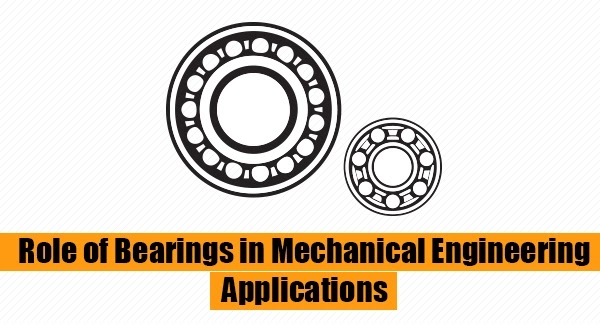Table of Contents
Introduction:
Bearings are machine elements that allow components to move with respect to each other. There are two types of bearings: contact and non-contact. Contact-type bearings have mechanical contact with equipment, which includes sliding, rolling, or flexural bearings. Non-contact bearings include liquid, air, mixed phase, and magnetic bearings. The lack of mechanical contact eliminates static friction. PE Mechanical exam review courses cover industrial applications and material properties of bearings.
Every bearing type has its own application area. Every mechanical engineer should be aware of the applications and limitations of each bearing type as well as the fundamental operating principles of different bearings so that the correct bearing for the intended application can be selected. Our PE Mechanical review course recaps the fundamentals of bearings and their applications.

Bearings and Mechanical Applications:
Ball Bearings
Ball bearings are a very common type of bearing, as they handle both radial and thrust loads. However, they can handle only a small amount of weight. These can be found in a wide range of applications such as roller blades and hard drives.
Roller Bearings
Unlike ball bearings, roller bearings are equipped to carry large loads. The load distribution is spread over a wide area as the primary roller is in the form of a cylinder to carry large loads. However, these bearings cannot handle thrust loads. If there are space constraints in the equipment, needle roller bearings need to be used.
Ball Thrust Bearings
This type of bearing is designed for applications specified for low speed and low weight that can carry a thrust load. An example of a ball thrust bearing is a bar stool used to support a seat.
Roller Thrust Bearings
These bearings are similar to ball thrust bearings as they are designed to exclusively handle thrust loads. However, unlike ball thrust bearings, they can handle larger loads. These bearings can be found in a wide range of applications including helical gears in car transmissions.
Tapered Roller Bearings
Unlike ball bearings, tapered roller bearings can handle both large thrust and radial loads. These bearings are used in automobile transmissions, which contain huge thrust and axial loads.
Sliding Contact Bearings
A wheel on a simple axle with sliding contact between the two is one of the most common types of bearings. Bushing is a sliding contact radial bearing element used to support a shaft and have integral flanges to support axial loads. Sliding contact bearings are commonly used for low and modest speed applications.
Rotary Motion Bearings
This anti-friction bearing is often used for rolling elements, such as balls or rollers, which reduce friction. The rolling element is normally constrained between a ring (inner race) and another ring (outer race). A cage typically acts as a separator and keeps the rolling elements apart to prevent rubbing.
Specialized Bearings
For some specific applications, specialized bearings are produced similarly to giant roller bearings for handling extremely large loads and magnetic bearings for high speeds.
Mechanical engineers preparing for the PE exam should be familiar with engineering applications of bearings.
No comments :
Post a Comment